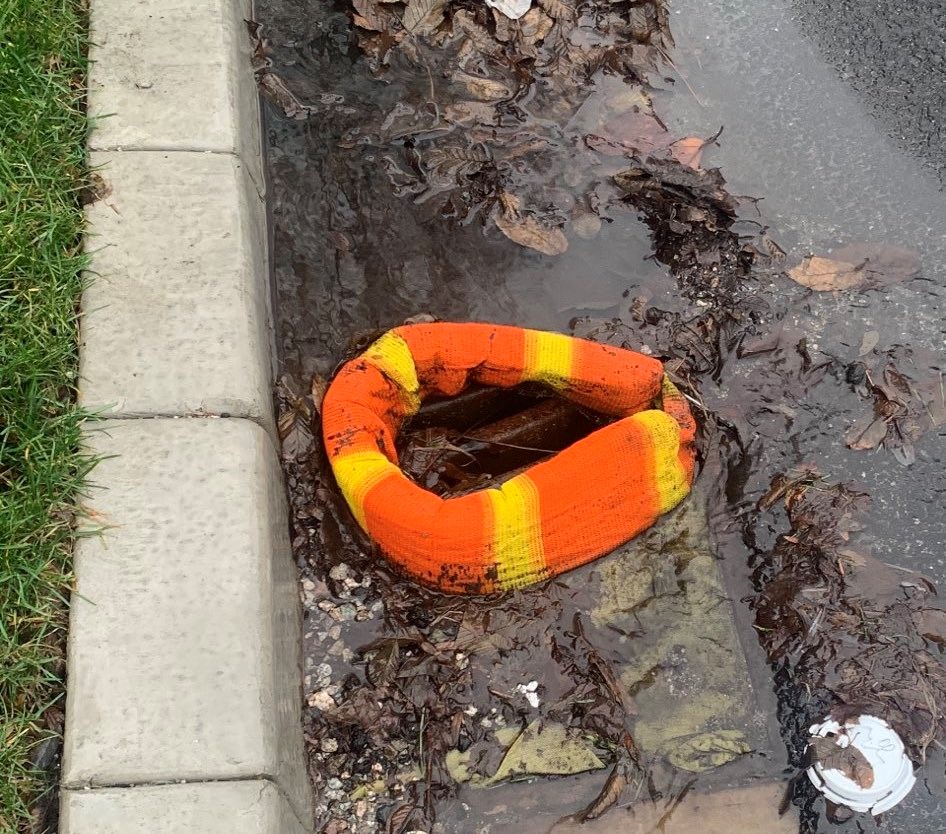"Catch basins are essential parts of the city’s drainage infrastructure, allowing rain to drain from streets and be conveyed to the city’s sewer system," according to Jimmy Zammar, Director of Urban Watersheds, Sewers and Drainage in Vancouver.
Zammar explains that catch basins help prevent localized flooding and debris from being washed into adjacent waterways which are often habitats for aquatic species like salmon. However, in the fall and winter, they can become blocked by leaves, snow, ice and other debris, preventing proper drainage and flooding the surrounding roads, an issue that is causing concern among Vancouverites in light of the recent heavy rain.
It is the City of Vancouver's responsibility to keep catch basins on city property clear and Zammar assures that crews work hard to keep city catch basins clear "with a focus on areas prone to flooding."
However, he adds "in the context of climate change, we’re seeing heavier precipitation events putting pressure on our drainage systems. With about 45,000 catch basins across Vancouver, it can be very difficult to attend to all of them in a relatively short period as in the case of a sudden heavy rain event."
Bright orange fabric "donuts" part of catch basin set-up
A Â鶹´«Ã½Ó³»resident also pointed out on Twitter that a bright orange fabric donut was also preventing proper drainage at a catch basin near Rupert and 22nd. The donut (which looks like a striped folded-over traffic cone) seemed to be doing more harm than good but actually serves an important purpose according to the city.
Catch basin donuts are put in place to protect the basins from construction runoff which can carry silts, sediments, and other contaminants that would potentially harm aquatic species (like those in Still Creek in the case of Rupert Street) if it entered into receiving waters.
There are made of polypropylene and are considered an environmentally-friendly solution to clean water of silt and sediment. The filter fabric wraps around the grate and is fastened into place. It is meant to filter while also preventing water pooling during heavy rainfalls but if there is additional debris such as leaves or litter, it can clog the drain, as was the case on Rupert Street.
How Â鶹´«Ã½Ó³»residents can help with catch basin maintenance
The city has launched an "" program to encourage residents to take ownership of their own neighbourhood catch basins and to keep help prevent this issue.
"It only takes a few minutes to care for your catch basin, but it goes a long way in helping to keep neighbourhoods safe, and allowing our operations staff to attend to priority areas and larger sewers system maintenance issues," says Zammar.
That said, he also confirms that all urban rainwater runoff (rain that lands on the street or other hard surfaces) can pick up pollutants such as hydrocarbons and heavy metals from roofs, streets, and other surfaces, and carry them directly into adjacent waterways.
"That’s why the City has adopted the Rain City Strategy which uses green rainwater infrastructure (GRI) to intercept rainwater before it gets into the pipe system," he explains. "GRI uses soil and plants to filter pollutants from rainwater and minimize water quality impacts on our environment."



